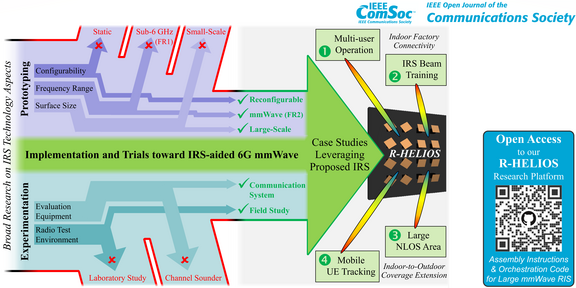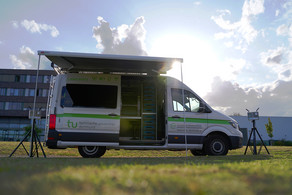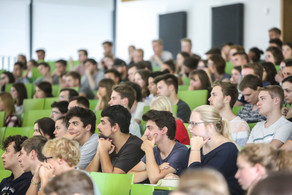Journal Article on our Intelligent Reflecting Surface R-HELIOS published
- News
- News
- 6GEM

CNI has been investigating millimeter-wave (mmWave) communications for approximately 7 years and has started looking into intelligent reflecting surfaces (IRSs) for power- and cost-efficient beyond-line-of-sight (BLOS) connectivity about 5 years ago. In recent years, we have focused on custom-tailored (i.e., static) IRSs, particularly following a unique modular geometric approach named HELIOS. Our latest works experimentally underlined the high potential of this zero-energy and zero-touch solution which is moreover compatible with existing mobile mmWave networks. However, IRSs with other characteristics are also considered for future 6G networks. Our article in the prestigious IEEE Open Journal of the Communications Society now addresses these other trends, particularly reconfigurable IRSs, which are a hot topic in contemporary wireless communications research.
In our study, we first conducted a literature survey and identified more than 80 research papers that proposed and experimentally validated IRSs exhibiting various characteristics. However, despite all of these promising research results for this new technology concept, we observe a lack of an (i) large-scale, (ii) reconfigurable, and (iii) mmWave IRS platform that has been experimentally validated (iv) with real communication system equipment and (v) in a field environment. Against this background, we extended our HELIOS approach to become reconfigurable using mechatronic components, thus procuring R-HELIOS. It is accompanied by a remote control and beam orchestration center, which allows us to trial future 6G network functionalities. The assembly instructions and code are available on GitHub. Our experiments successfully studied four aspects of 6G beam management with R-HELIOS: beam training and beam tracking for individual users, multi-armed reflection beams serving multiple users, and IRS-induced connectivity gains over larger areas. The article is available to all interested readers on our homepage.
We look forward to using R-HELIOS in our ongoing 6G research and hope that other researchers will also adopt our platform to conduct experiments which bring us a step closer to 6G!
S. Häger, M. Kaudewitz, F. Schmickmann, S. Böcker, C. Wietfeld, "Field Performance Evaluation of a Mechatronic Reflector System in a Private mmWave Network Environment," in IEEE Open Journal of the Communications Society, pp. 1-24, May 2025. DOI: 10.1109/OJCOMS.2025.3572723. (Early access.) [pdf] [Code] [Details]
This work has been supported by the German Federal Ministry of Research, Technology and Space (BMFTR) in the course of the 6GEM Research Hub under the grant number 16KISK038.






